
Welcome to planosnakes.com! I am David, a snake enthusiast living in Plano, TX. Many people don't know that Plano is in fact full of snakes! You just need to know where to find them - they can often be shy and elusive. Some Texas snake species are more common outside of the city limits, in different parts of Collin County TX, but many types of snakes are indeed common in the more urban parts of Plano. This guide is meant to help educate you about the beautiful snakes of Plano, and to help you identify the most common snakes of Plano, as well as the venomous snakes of Plano that you should learn to recognize and avoid. If you want more detail, click here for my complete list of ALL snake species in Plano. Remember the following:
- Most snakes of Plano are harmless and don't want to encounter you
- Venomous snakes exist but are uncommon in Plano, Texas
- Snakes eat rats and mice and are a valuable part of the Texas ecosystem
- Never kill a snake - if you leave a snake alone, it will leave you alone.
Common Snake Species in Plano
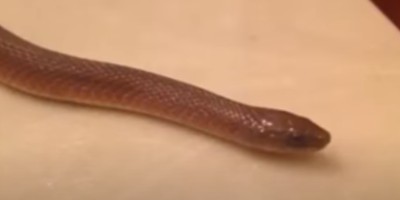 Texas Brown Snake:
The Texas brown snake (Storeria dekayi texana) is a common variety of the brown snake that is found in the United States from southern Minnesota down through Texas and Mexico. They like woodlands where they can hide in logs and under bark. In urban areas, they seek out gardens, flower beds, and abandoned lots where there is construction debris and old pieces of linoleum and roofing to hide under. They are not venomous.
The Texas brown snake has a reddish-brown coloring with dark brown spots around the eye. Unlike other varieties of brown snakes, it doesn’t have a black vertical bar or horizontal stripe. Adults average 12 inches in length but can be up to 19 inches. Their mouths are not big enough to bite humans and they feed mostly on slugs and insects.
Texas Brown Snake:
The Texas brown snake (Storeria dekayi texana) is a common variety of the brown snake that is found in the United States from southern Minnesota down through Texas and Mexico. They like woodlands where they can hide in logs and under bark. In urban areas, they seek out gardens, flower beds, and abandoned lots where there is construction debris and old pieces of linoleum and roofing to hide under. They are not venomous.
The Texas brown snake has a reddish-brown coloring with dark brown spots around the eye. Unlike other varieties of brown snakes, it doesn’t have a black vertical bar or horizontal stripe. Adults average 12 inches in length but can be up to 19 inches. Their mouths are not big enough to bite humans and they feed mostly on slugs and insects.
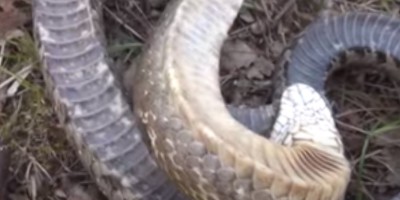 Hognose Snake:
The hognose snake (Heterodon platirhinos) is a common species of snake in the United States that can be found from as far north as southern Minnesota and New Hampshire, to Kanas, and as far south as Florida and Texas. They like areas with sandy soil and woodlands. In urban settings, it is attracted to piles of debris and construction sites with exposed soil. They prey mainly on amphibians, such as toads, and have fangs with an amphibian-specific venom that is not deadly or even harmful to humans. They are considered non-venomous.
The hognose snake gets its name from its most distinctive feature- an upturned nose that is useful for digging in sandy soil. They come in a wide variety of colors and can be a mix of red, green, orange, brown, yellow, grey, or black. They also have a wide variety of markings. They tend to have lighter bellies that are tan, cream-colored, or grey. The average adult is 28 inches and females tend to be larger than males.
Hognose Snake:
The hognose snake (Heterodon platirhinos) is a common species of snake in the United States that can be found from as far north as southern Minnesota and New Hampshire, to Kanas, and as far south as Florida and Texas. They like areas with sandy soil and woodlands. In urban settings, it is attracted to piles of debris and construction sites with exposed soil. They prey mainly on amphibians, such as toads, and have fangs with an amphibian-specific venom that is not deadly or even harmful to humans. They are considered non-venomous.
The hognose snake gets its name from its most distinctive feature- an upturned nose that is useful for digging in sandy soil. They come in a wide variety of colors and can be a mix of red, green, orange, brown, yellow, grey, or black. They also have a wide variety of markings. They tend to have lighter bellies that are tan, cream-colored, or grey. The average adult is 28 inches and females tend to be larger than males.
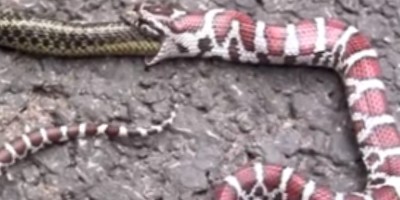 Eastern Milk Snake:
The eastern milk snake (Lampropeltis trangulum) is a nearly universal species that can be found from Canada, throughout much of the United States, and into Mexico and Ecuador. They are typically found in fields, woodlands, and rocky hillsides but like dark places where they can take cover, such as trash piles and basements. They are not venomous and even are kept as pets.
Eastern milk snakes have a distinctive pattern of light to reddish-brown bands that are bordered by a thin black line on a gray to light brown to red background. They are often mistaken for the more dangerous copperhead snake. Adult eastern milk snakes average 24 to 52 inches in length. They are primarily nocturnal.
Eastern Milk Snake:
The eastern milk snake (Lampropeltis trangulum) is a nearly universal species that can be found from Canada, throughout much of the United States, and into Mexico and Ecuador. They are typically found in fields, woodlands, and rocky hillsides but like dark places where they can take cover, such as trash piles and basements. They are not venomous and even are kept as pets.
Eastern milk snakes have a distinctive pattern of light to reddish-brown bands that are bordered by a thin black line on a gray to light brown to red background. They are often mistaken for the more dangerous copperhead snake. Adult eastern milk snakes average 24 to 52 inches in length. They are primarily nocturnal.
Venomous Snake Species in Plano
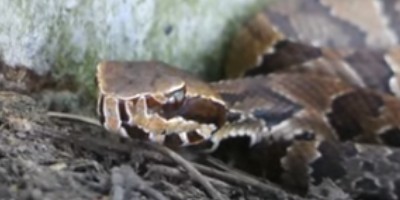 Cottonmouth Snake:
The cottonmouth snake (Agkistrodon piscivorus) can be found throughout the southeast from Virginia to Georgia and into Texas. They are also known as water moccasins and they like swamps, floodplains, and wetlands. They can be away from water as well. They particularly like drying pools where they can feed on fish and amphibians. They are venomous.
Cottonmouth snakes have triangular-shaped heads with large jowls that hold their venom. They come in a variety of colors and are usually marked with dark crossbands on a brown or yellow ground color, some are completely brown or black. Their bellies usually have brownish-yellow blotches. They are typically 24 to 48 inches. They are migratory and vulnerable to loss of habitat.
Cottonmouth Snake:
The cottonmouth snake (Agkistrodon piscivorus) can be found throughout the southeast from Virginia to Georgia and into Texas. They are also known as water moccasins and they like swamps, floodplains, and wetlands. They can be away from water as well. They particularly like drying pools where they can feed on fish and amphibians. They are venomous.
Cottonmouth snakes have triangular-shaped heads with large jowls that hold their venom. They come in a variety of colors and are usually marked with dark crossbands on a brown or yellow ground color, some are completely brown or black. Their bellies usually have brownish-yellow blotches. They are typically 24 to 48 inches. They are migratory and vulnerable to loss of habitat.
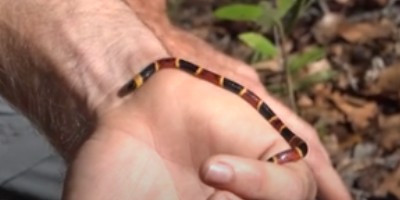 Coral Snake:
The coral snake (Micrurus tener) is a beautiful but deadly snake found in the southern United States and northeastern and central Mexico. They thrive in a variety of places from thorn scrub to pine forests. They prey on lizards, frogs, and even other snakes. They are highly venomous.
Coral snakes are remarkably colorful snakes, having black, yellow, and red bands all around their bodies. The red bands are always adjacent to yellow bands. The red bands have black specs throughout. Adult coral snakes average between 20 to 30 inches.
Coral Snake:
The coral snake (Micrurus tener) is a beautiful but deadly snake found in the southern United States and northeastern and central Mexico. They thrive in a variety of places from thorn scrub to pine forests. They prey on lizards, frogs, and even other snakes. They are highly venomous.
Coral snakes are remarkably colorful snakes, having black, yellow, and red bands all around their bodies. The red bands are always adjacent to yellow bands. The red bands have black specs throughout. Adult coral snakes average between 20 to 30 inches.
If you're unsure, you can email me a photo of the snake at info@planosnakes.com and I will email you back with the snake's species. If you found a snake skin, read my Found a Skin? page, and you can email me a photo of the skin, and I'll identify the snake for you. If you need professional Plano snake removal help, click my Get Help page, or see the below website sponsor I found, who provides that service.
Remember, the term is not poisonous snakes of Plano, it's venomous snakes of Plano. Poison is generally something you eat, and venom is injected into you. That said, dangerous snakes are very rare in Plano. The few venomous snakes of Collin County are rarely seen. But they are commonly misidentified, so learn about all the snake species of Plano in order to correctly identify them. These snakes are usually also found in the surrounding towns of McKinney, Allen, Anna, Farmersville, Princeton, Melissa, Murphy, Fairview, Nevada, Blue Ridge, Parker, Lucas, Lavon, New Hope, Lowry Crossing, Saint Paul, Weston, Westminster, and the surrounding areas.
Read our article about:
Simple Tricks that Will Scare the Snakes Away
planosnakes.com domain and hosting costs made possible by the generous support of this sponsor:
